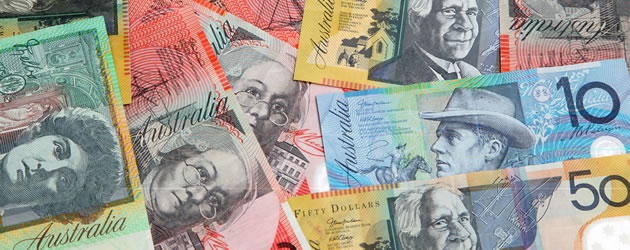Pound Australian Dollar (GBP/AUD) Exchange Rate Falls as UK Manufacturing Slides to Second Lowest Level since Brexit Referendum
This morning, the Pound Australian Dollar (GBP/AUD) exchange rate remains flat, and is currently trading at an inter-bank rate of AU$1.8648.
February’s UK Manufacturing PMI slipped to 52, dipping to a four-month low, and the second lowest level since July 2016.
Manufacturers’ optimism regarding the future plummeted to its lowest level in the series’ history, showing the rate of job losses in the manufacturing sector had also jumped to a six-year high, which likely dampened sentiment in Sterling.
Commenting on the data, Rob Dobson, Director at IHS Markit said:
‘Official data confirm that manufacturing is already in recession, and the February PMI offers little evidence that any short-lived boost to output from stock-building is sufficient to claw the sector back into growth territory.
‘Apart from the uncertain outlook, manufacturers also face a darkening backdrop of a domestic market slowdown and weakening inflows of new export business, as global growth decelerates and trade tensions bite. Manufacturing and the broader UK economy therefore face a difficult 2019, with the slowdown being exacerbated later in the year as inventory positions are unwound and Brexit-related headwinds likely to linger.’
Australian Dollar (AUD) Buoyed as Manufacturing Improves at Fastest Pace in Five Months
Early in the session today, the AiG released PMI data that showed manufacturing rose to 54 in February.
This showed that activity levels improved at their fastest pace in five months, although the GBP/AUD exchange rate remained muted.
Better-than-expected data from China also likely helped the risk-sensitive Australian Dollar (AUD), as the Caixin Manufacturing PMI rose from 48.3 to 49.9.
While the sector is still contracting, the data also showed that selling prices increased for the first time in four months.
Commenting on the data, Dr Zhengsheng Zhong, Director of Macroeconomic Analysis at CEBM Group said:
‘The Caixin China General Manufacturing PMI picked up to 49.9 in February from a recent low of 48.3 in the previous month, pointing to an easing of the economic downturn.
‘The subindex for new orders returned to expansionary territory in February after staying in contraction for two months. Despite slipping back into contractionary territory following a rise the month before, the gauge for new export orders hit its second highest level since March 2018. Domestic manufacturing demand improved significantly, and foreign demand was not deteriorating as quickly as last year.’
Geopolitical Tensions Weigh on the Risk-Sensitive Australian Dollar (AUD)
The Australian Dollar (AUD) was able to claw back some losses today following yesterday’s reports the summit between US President Donald Trump and North Korean Leader Kim Jong-un ended abruptly.
The unexpected breakdown of the summit in Hanoi weighed on the ‘Aussie’ as the US said it could not meet Kim’s sanction demands.
Speaking to reporters, President Trump said:
‘It was all about the sanctions. They wanted the sanctions lifted in their entirety and we couldn’t do that.’
However, the US version of the story was challenged at a late-night news conference where North Korea refuted the claims.
North Korean Foreign Minister Ri Yong-ho said his country had made ‘realistic’ proposals including the complete decommissioning of Yongbyon with US observers present.
Pound Australian Dollar Outlook: Will GBP/AUD Exchange Rate…
Looking ahead to the start of next week’s session, the GBP/AUD pairing could rise following the release of January’s Australian building permits.
If building permit figures continue to contract, it could weigh on the ‘Aussie’ (AUD).
The Pound (GBP) could rise on Monday following the release of the UK Markit Construction PMI.
If construction growth is shown to have increased in February it could provide an upswing of support for Sterling.
Geopolitical tensions such as those between the US and China, or Brexit, are also likely to cause movement in the pairing.
If there are further suggestions that the US and China are not as close as expected to a trade deal, the Pound Australian Dollar (GBP/AUD) exchange rate may rise.


Comments are closed.